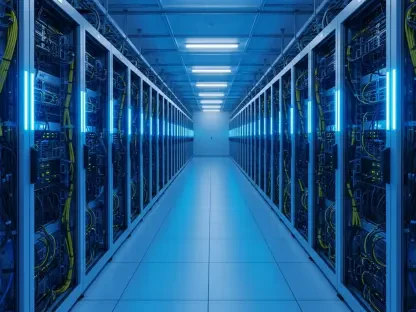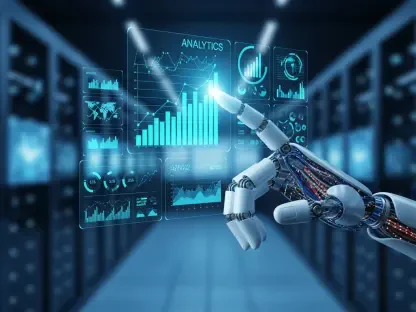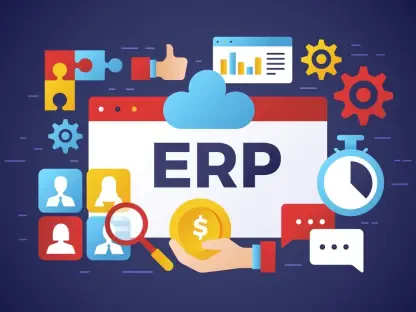Understanding the SaaS Landscape and the Rise of Agentic AI
The Software-as-a-Service (SaaS) industry stands as a critical pillar of enterprise technology, powering businesses with scalable, cloud-based solutions that drive efficiency and innovation across various sectors. Today, SaaS platforms support everything from customer relationship management to financial operations, with global adoption reflecting their indispensable role in modern operations. Yet, a seismic shift is underway, fueled by the emergence of agentic AI—artificial intelligence capable of autonomous reasoning and decision-making without constant human oversight. This technology promises to redefine how enterprises interact with software, moving beyond traditional user-driven tools to systems that operate independently.
Agentic AI represents a departure from conventional SaaS models, where human input dictates every action. Instead, these intelligent systems can analyze data, make decisions, and execute tasks on their own, heralding an era of self-orchestrating ecosystems. For SaaS providers, this shift introduces both opportunities to enhance service delivery and challenges in adapting to a landscape where automation takes center stage. Partner ecosystems, long vital for integration and support, must also evolve to accommodate these autonomous capabilities while maintaining relevance in strategic roles.
The implications are profound, as key market players like Salesforce and Microsoft are already embedding agentic AI into their offerings to stay competitive. Technological drivers, including advancements in machine learning and natural language processing, fuel this transformation, while the growing demand for intelligent ecosystems underscores a broader business need for speed and adaptability. As SaaS providers and their partners navigate this transition, understanding the dynamics of agentic AI becomes essential to shaping the future of enterprise technology.
Key Trends and Market Dynamics of Agentic AI in SaaS
Emerging Trends and Technological Shifts
Agentic AI is driving significant changes in the SaaS sector, with automation of complex workflows at the forefront of this evolution. The transition from a “human plus app” model to an “AI agent plus API” framework marks a pivotal trend, enabling systems to independently handle tasks that once required manual intervention. This shift allows businesses to achieve faster outcomes, reducing dependency on human operators for routine processes and focusing instead on strategic priorities.
Consumer and business expectations are also evolving, with a clear demand for speed, efficiency, and actionable results rather than just data insights. SaaS providers are recognizing the potential to integrate agentic workflows as a core differentiator, setting themselves apart in a crowded market by offering solutions that anticipate and act on user needs. This redefinition of value propositions is pushing companies to rethink how they design and deliver services, prioritizing automation over traditional feature sets.
Emerging technologies and interoperability standards further accelerate this trend, fostering intelligent ecosystems where systems communicate seamlessly. The development of shared protocols and frameworks ensures that agentic AI can operate across diverse platforms, enhancing collaboration between vendors and partners. As these standards gain traction, they lay the groundwork for a more connected and responsive SaaS landscape, amplifying the impact of autonomous technologies.
Market Growth and Future Projections
The adoption of agentic AI within SaaS is experiencing rapid growth, with market expansion projections indicating a substantial rise in investment over the coming years. Industry data suggests that the integration of autonomous systems could lead to significant cost reductions, driven by plummeting expenses in AI model development and deployment. This affordability is making agentic AI accessible to a broader range of SaaS providers, fueling widespread implementation.
Performance metrics further highlight the transformative power of these systems, with reports showing increased transaction volumes and notable gains in operational efficiency. Businesses leveraging agentic AI are processing tasks at unprecedented speeds, allowing for higher throughput and reduced latency in service delivery. Such improvements are not merely incremental but represent a fundamental enhancement to how SaaS platforms function in real-world scenarios.
Looking ahead, forecasts from 2025 to 2027 suggest that agentic AI will redefine SaaS offerings, with autonomous capabilities becoming a standard feature rather than an optional add-on. Collaboration within partner ecosystems is expected to deepen, as companies align to harness the full potential of self-orchestrating networks. This trajectory points to a future where SaaS is synonymous with intelligent automation, reshaping competitive dynamics across industries.
Challenges in Integrating Agentic AI into SaaS Ecosystems
The integration of agentic AI into SaaS ecosystems presents formidable architectural challenges, particularly in transitioning from stateless to stateful systems. Current infrastructures, designed for limited transaction volumes of around 10,000 per second, struggle to accommodate the massive scale of agentic operations, which could reach up to 1 million transactions per second. This leap in demand necessitates a complete overhaul of system design to ensure stability under intensified workloads.
Technological hurdles compound these issues, as legacy infrastructure often lacks the resilience required to support autonomous agents. Many existing SaaS platforms are built on outdated frameworks that cannot handle the event-driven nature of agentic systems, leading to potential bottlenecks and failures. Addressing these limitations requires innovative approaches to system architecture, focusing on scalability and adaptability to prevent disruptions in service delivery.
Market-driven obstacles also loom large, with the risk of obsolescence threatening SaaS providers who fail to adapt to AI-driven changes. Companies slow to embrace agentic technologies may find themselves outpaced by competitors offering more automated, efficient solutions. To mitigate this, strategic investments in scalable infrastructure and intentional redesigns are critical, ensuring that platforms remain relevant and capable of meeting evolving business needs.
Security and Compliance Implications of Agentic AI
The autonomy of agentic AI introduces an expanded attack surface, creating new vulnerabilities in SaaS ecosystems. The non-deterministic nature of these systems, where outcomes are not always predictable, heightens risks such as prompt injection, where malicious inputs can manipulate agent behavior, and cascading failures that impact interconnected networks. Such threats challenge the security frameworks traditionally used to protect software environments.
Current security protocols, often designed for static, human-driven interactions, fall short in addressing the dynamic needs of agentic systems. Mechanisms like identity binding and policy enforcement are inadequately equipped to manage the fluid trust boundaries of autonomous agents, leaving systems open to impersonation and unauthorized access. This gap underscores the urgent need for updated defenses tailored to the unique challenges of AI-driven operations.
Compliance with data protection and privacy regulations adds another layer of complexity, as heightened security risks must be balanced with legal obligations. To build trust in intelligent ecosystems, SaaS providers must adopt security-first architectures, incorporating observability tools and behavioral simulations to monitor and predict agent actions. These measures are essential to safeguarding data and maintaining regulatory adherence in an increasingly autonomous landscape.
The Future of SaaS and Partner Ecosystems with Agentic AI
Envisioning the long-term impact of agentic AI reveals a future where SaaS evolves into fully autonomous, self-orchestrating networks that operate with minimal human intervention. This transformation promises to streamline business processes, enabling platforms to anticipate needs and execute solutions proactively. Such a shift could redefine operational paradigms, placing automation at the heart of enterprise technology strategies.
Partner ecosystems will also undergo significant changes, striking a balance between AI-driven automation and human expertise. While routine tasks become the domain of autonomous systems, partners will focus on providing strategic oversight, ethical guidance, and industry-specific insights. This dual approach ensures that technology advancements align with business goals and societal values, maintaining a human touch in critical decision-making.
Potential disruptors, such as standardized ontologies for semantic interoperability, could further shape this future by establishing common frameworks for AI communication. Market leadership may hinge on the ability to drive adoption of these standards, while external factors like global economic conditions and regulatory shifts will influence the pace of integration. As these elements converge, they will collectively determine the trajectory of SaaS and partner ecosystems in an agentic AI-driven world.
Navigating the Agentic AI Revolution in SaaS
Reflecting on the transformative journey of agentic AI in the SaaS sector, it becomes evident that this technology has reshaped business models, system architectures, security protocols, and partner collaborations in profound ways. The shift toward autonomous, self-orchestrating systems has introduced unprecedented efficiencies, yet it also demands a reevaluation of how companies approach innovation and competition. This period of rapid change has highlighted both the immense potential and the intricate challenges of integrating intelligent ecosystems.
Moving forward, SaaS providers need to prioritize strategic redesigns, focusing on scalable architectures capable of handling the demands of agentic operations. Investing in robust security measures to address new vulnerabilities is no longer optional but a fundamental requirement to maintain trust and compliance. Forming innovative partnerships will also prove crucial, enabling organizations to leverage collective expertise in navigating this autonomous era.
A forward-thinking approach should center on leading the development of interoperability standards, ensuring seamless communication across diverse platforms. By embracing a security-first mindset and fostering collaborative ecosystems, companies can position themselves at the forefront of this revolution. The path ahead offers immense opportunities for those who act with foresight, turning the complexities of agentic AI into catalysts for groundbreaking progress in enterprise technology.









